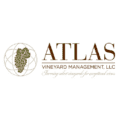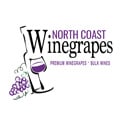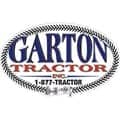French Flavor from Mendocino Vines.
Two black and white magpies flit between the fence posts as I drive up the gravel driveway to Baxter Winery on Greenwood Ridge. The setting on this knoll is rustic and beautiful, with a stunning view of Signal Ridge and the last withering wisps of the lightning fires’ smoke along the horizon.
As I pull up, the 29-year old winemaker Phillip Baxter, Jr. crosses the driveway in flipflops, jeans, and a t-shirt. Fit and boyishly handsome, he welcomes me and talks about the 200 lightning strikes he counted the night of the storm. “This entire ridge was spared,” he is amazed to point out calling it “a blessed path” between the Navarro and the Signal Ridge fires. He did have to put off bottling when the smoke was at its thickest. “We lost two to three weeks of work,” he says.
Picking bins and small fermenters are stacked under an awning adjacent to the weathered redwood building that was once a cabinet makers shop and is now Baxter Winery. A small Filmer bottler can turn out 250 cases in a day. When the Baxter family purchased this 24 acres on Greenwood Ridge about ten years ago, the first thing they did was put in a winery.
This is noteworthy because it’s not often that someone would buy property and outfit the winery before planting grapes. But the Baxters have a long tenure of winemaking. Phil’s father, also named Phillip has been in the wine business in Napa Valley for nearly 40 years. He first worked at Krug and then Souverain when it was in Napa and he helped start Rutherford Hill Winery, where he was chief winemaker for ten years. Phil, Sr. has had his own brand Philippe-Lorraine in Napa Valley since 1989. Phil, Jr. grew up in vineyards.
The Baxter’s entree into Mendocino County came when they leased the Mendocino Hill vineyard on Old River Road south of Ukiah. About ten years ago the Baxters found this lovely spot with a 120 year old farmhouse and a 1400-square foot redwood building.
Phil, Jr. studied winemaking at the University of California at Davis, spent a year in Burgundy in southeastern France, and then went back to France after college to work at harvest in Pommard. “I make wine like I learned in Burgundy,” he says.
He pours a taste of Pinot Noir from Toulouse Vineyard in Anderson Valley in a Riedel stemless glass sitting on an upended wine barrel. The “cellar” is stacked floor to ceiling with wine barrels, “all purchased used”, says Phil who likes to age his wines a year and a half without picking up overpowering oak flavors. In between the barrels the aisles are stacked with cases of wine.
In one of the cleared aisles, Phil uses a glass wine “thief” to siphon out a taste of carignane from Caballo Blanco vineyard. “I love the scale of this winery,” he says dripping the wine into my glass. “I can taste and make blends and analyze which wine is ready to be bottled whenever I want.” He’s also keen on promoting carignane, an underrated grape these days that was once grown as part of a field blend for jug wine. This one has the essence of “broiled strawberries” and came from 70-year old dry farmed vines.
Influenced by the flavors of Burgundy, “especially the Northern Rhone and Cote Roti,” says Phil, “I let the wines make themselves as much as possible.” For the most part Phil ferments the grapes on their natural yeasts and leaves the wines unfined and unfiltered. He wants to take advantage of the grapes from each vineyard and “let nature do its thing, allowing the individual fruit characteristics to shine.”
Phil is delighted to rattle off the names of the vineyards he buys grape from such as Eaglepoint Ranch above Talmage, Venturi in Calpella, Caballo Blanco on Robinson Creek Road in Ukiah, Francis Fashauer (from a duPratt zinfandel clone) on Signal Ridge, Valenti on Greenwood Ridge, Oppenlander in Comptche, Matt Henneberg’s in Philo, and Run Dog in Boonville. The label is a straightforward simple design that designates the name BAXTER along with the varietal, the vintage and the vineyard.
Baxter makes about 3000 cases of handcrafted wines and 500 cases under the Pipo label, “our lower priced Bistro wine,” says Phil. Sketches of French scenes grace the label. The Pipo Red features a game of boules (French bocce) and is a blend of carignane, grenache, zinfandel and petite sirah. The dry fruit rich Pipo Rose has a jeune fille on a scooter heading uphill to a Provencal village, probably to a party.
In the laissez faire ambience of Baxter Winery life is about as good as it gets. “Work is fun and we eat and drink well,” Phil says tasting the 2006 Oppenlander Vineyards Pinot Noir. “Every time I taste this wine, I am back in Burgundy–probably because it captures the flavor that harkens to the vineyard. It’s neither intense or something that needs correcting, it is the flavor profile I am shooting for.”
Tasting Notes: In keeping with the French experience a la Mendocino I tasted the 2003 Pipo Red with ratatouille made from peppers, eggplant, zucchini and tomatoes from our garden and a wedge of Elk Creamery’s organic Santa Francesca cheese. The wine, a lovely mouthful in harmonious balance of rich fruit, low tannins and integrated acid, was smooth and yummy. A roasted fig added a complementary finale.
















































